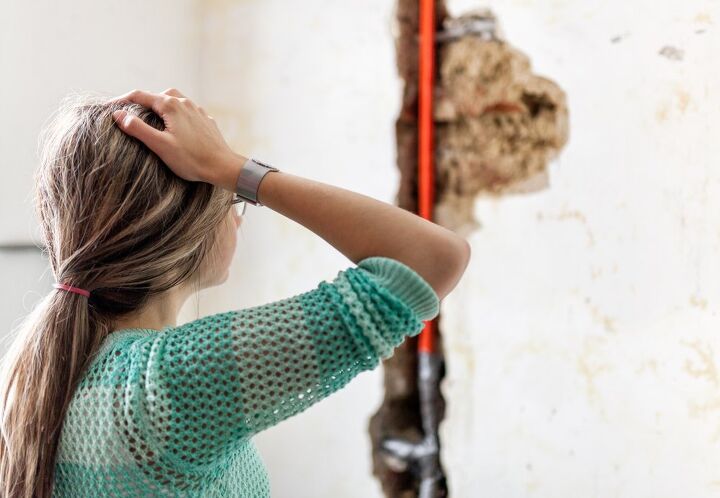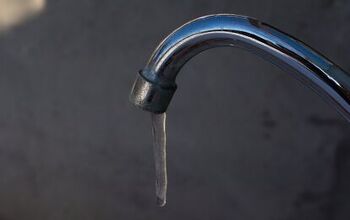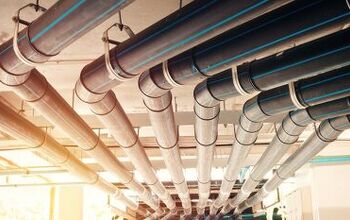Who Is Responsible For Pipes In Condo Walls?

Condominiums are symbolic of our developed modern society. They allow people to have the benefits of privacy and ownership. Condos also having a higher power to manage such headaches as landscaping, security and general upkeep. This relationship can be blissful and mutually beneficial until a pipe bursts in the wall. Such an incident can leave everyone involved pointing fingers and wondering who is responsible.
Generally speaking, pipes located inside your unit and within the walls surrounding it are the individual condo owner’s responsibility. Pipes that affect the entire building, the outside and common areas, regardless of their location, are generally the building’s responsibility. Be sure to check your local laws, HOA and condo bylaws for more information on who is responsible for pipes inside the condo.
The responsibility for pipes inside condo walls is not always a simple and clear cut answer. There are some circumstances where the owner of the building is responsible. Others exist when the person who owns the unit is responsible.
There are even more circumstances where a tenant or owner of a different unit is responsible for the pipes inside condo walls. In order to better understand who is liable for these pipes, you need to learn about the pipes themselves.
Common Pipes Found In Condo Walls
You need to know the types of pipes in condos in order to determine who is responsible for their upkeep and repair. Pipes in condos have different purposes. Some pipes are for individual tenant use while others have broader uses. Understanding these pipes will help you understand who is liable for their upkeep and repair.
- Potable Water Pipes – These pipes are responsible for all the clean water that goes into your unit. These pipes stem from a main water pipe from the condo or municipal water line (depending on design). They are pressurized pipes that come out of your faucets and showers.
- Drain Pipes – Drain pipes carry waste water. They connect from your drains, into the wall and then out of the apartment. They eventually connect to main sewage lines.
- Sewer Pipes – These are located outside the condo itself, often underground and out of site. They are owned by the condo building or municipality, depending on their exact location.
- Fire Sprinkler Pipes – These pipes are often visible, and sometimes hidden within the walls. They carry water from the main water line to sprinkler systems. They are there to protect against fire.
- Vent Pipes – Vents stacks and pipes do not carry liquid. They are used to filter air, remove hot air or help push gas through drain pipes.
When The Condo Is Responsible
A condo is responsible for pipes in condo walls when the pipes in question affect the entire condominium. Pipes in common areas, or pipes that do not service individual units, are up to the building owner to upkeep and repair.
If, for example, the condo has landscaping outside, or a courtyard within, all pipes associated with its upkeep are the condo’s responsibility. There is a chance that a pipe inside or near your walls is actually the condo’s responsibility. It is always a good idea to get a full layout of your wall’s interiors before signing on to ownership in a condo.
If a pipe is not within your walls, but the damage finds its way to your pipes or walls, the issue becomes more complicated. Be sure to alert the condo owners as soon as you notice anything fishy happening in regards to the pipes within your building.
When The Owner Of The Unit Is Responsible
It is important to note that there are many types of condo design. Regardless of design, however, when pipes are within the property of your unit they are your responsibility. Simply put, all the pipes inside the walls of your unit that you use are your problem.
This means all potable water pipes, drain pipes and vent pipes are up to you to upkeep. Be sure you know what these pipes are made of and what the upkeep protocol is for these different types of pipes.
Also, as the owner of the unit and the one who lives inside, your mindfulness of the space is also your responsibility. Poor decisions and neglect will also make you liable for any interior pipe damage that happens in your condo. Use of toxic drain cleaners and ignoring small leaks in drain pipes are two common mistakes owners make. These careless errors often cost them a lot of money down the line.
When A Renter Is Responsible
While many people own the condos they live in, it is also quite common to rent a condo from a landlord. The landlord can be a private individual, third party or directly from the condo itself. Regardless of who you rent from, a renter can be responsible for the pipes inside condo walls.
As a renter you are often responsible for any major damage you inflict on the property. If, for example, you try to nail a picture in the wall and hit a potable water pipe, you are likely going to be responsible for the repairs.
Neglect, or a lack of communication can also find a rentable responsible for pipe damage inside condo walls. If a leak starts inside a wall, this issue would normally fall on a condo owner. But if the tenant does not report this problem then the owner would have no way of knowing the problem exists. If the problem continues or escalates, the landlord can ask you to pay for the damages. The court of law may find you liable.
Check Your Local Laws And Condo Bylaws
Different states have different zoning laws when it comes to roles and responsibilities within condominiums. It is critical you always know your rights going into any living situation. This applies to all, regardless whether you are the building owner, condo owner or someone renting a unit.
Even if all signs point to a pipe not being your responsibility, you always need to check any agreements you signed when you purchased your condo. Check your HOA and condo bylaws if they exist.
Note For Renters: If you are renting the unit be sure to check your lease to see if the landlord outlines tenants responsibilities in case of emergency, or any issues within the home.
Address And Document Pipe Issues Immediately
Unlike stand alone homes, a pipe issue in a condo can affect more than just your home. A pipe burst that started at your neighbor’s home outside your four walls can affect your home within seconds, and vice versa. Living in close proximity to others means you are often subject to their plumbing and water issues as well.
Any time there is a pipe issue it is important you document where it started, when it started and how you first noticed the issue. When the bill arrives, it is best to have as much evidence as possible to show you should not be the one reaching for the checkbook.
Check Your Insurance Policy
While you may end up being the one responsible for the pipes inside the walls of your condo, you may not have to pay for the damage. Many homeowners insurance policies cover damage that occurs due to sewage, drainage or water pipe problems that are outside your control.
Be sure you know your policy and follow up with your insurance company as soon as a problem arises. This will ensure you take the right steps when you go to make your claim.
Concluding Thoughts On Pipes In Condo Walls
As a rule of thumb, if there is a pipe inside the perimeter of your condo property line, then it is your responsibility to repair and upkeep it.
If the pipe is outside your walls, or if it is not used for your unit but for general building purposes, the building owner is likely responsible. Regardless of who is responsible for damaged interior pipes, be sure to report any problems you notice right away, as this will decrease further damage and limit your liability.

Tom Gaffey is an expert writer who currently resides in Washington D.C. Tom has a passion for real estate and home improvement writing, as well as travel and lifestyle writing. He lived the last twelve years in Hawaii where he worked closely with luxury resorts and event planners, mastering his knowledge of aesthetics and luxury products. This is where he found his passion for home improvement and a keen interest in DIY projects. Currently, Tom resides in Washington D.C, and also working on his debut fiction novel.
More by Tom Gaffey



























